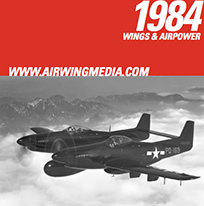Article By Sig Christenson, San Antonio Express-News
Second Lt. Samuel Smith knew what he was up against when his B-17 bomber group got orders to strike a German base that was home to 16 of the war’s newest planes, the Messerschmitt Me-262 — the first jet-powered aircraft to be used in combat.
“On the mission before this we went to Hamburg and there must have been 15 of them in the air, and I must have seen 10 or 15 bombers go down,” he said.
A few weeks shy of 88, Smith was honored Friday for his heroics on the mission that took them Hopsten on March 21, 1945. He received a Distinguished Flying Cross at Joint Base San Antonio-Randolph’s Taj Mahal, a crowd of more than 80 people giving a long standing ovation.
“He’s a representative of a generation of Americans that did something special,” said Gen. Edward A. Rice Jr., head of the Air Education and Training Command and himself a bomber pilot. “We were talking about the thousand-plane raids that will probably never again be replicated.”
The medal, which falls between the Bronze Star and Silver Star, was given decades late because a commander during World War II refused to sign off on them.
Long after the war, at a reunion, the commander admitted he was wrong, apologized and helped Smith get the medal.
Still, it was a bittersweet day. Only three of Smith’s eight crewmen and a few pilot buddies still are alive. Still sharp, he’s the only member of the crew who is mobile.
“Here it is 60, 70 years later and finally the award is being made,” said Smith, a Kerrville petrochemical plant consultant. “It’s a great thing to me, but in lots of respects it’s kind of sad because the guys who flew with me and helped are not here.”
In World War II, he commanded a Flying Fortress called “Jackie” out of Molesworth, a tiny town 70 miles north of London.
Awakened around 3 a.m. that March day, Smith and his crew ate the traditional pre-mission breakfast that included real eggs.
One by one, the B-17s with the 303rd Bombardment Group, called “Hells Angels,” took off. Even before reaching Hopsten, they got a rough welcome.
“We got bounced a lot with flak; the whole squadron did. All of the Plexiglas got shot out of my airplane on the right-hand side, but it happened so quick,” he said. “I didn’t have any people hit. All I had were holes in my airplane so I didn’t think anything about it.”
Amazingly, no one was hurt. Smith credits that to his standing order requiring everyone to wear their flak vests. He also got his procurement chief to provide cloth-covered chain mail mats, which were like carpet runners that lay between walls and blunt shrapnel.
Their approach at Molesworth appeared normal until the plane touched down. Suddenly, it made a hard right turn.
Realizing the bomber had damage to the landing gear and undercarriage, Smith lifted the right wing off the ground and pressed hard on the left brake. His goal was to guide the B-17 off the runway and into the grass.
“I literally stood up on the brakes,” Smith said.
It worked.
 Rather than losing control of the plane and possibly closing the runway, he parked the plane in the grass. A shot-out wheel was the culprit.
Rather than losing control of the plane and possibly closing the runway, he parked the plane in the grass. A shot-out wheel was the culprit.
Smith and his crew flew 24 missions and were selected to fly the new B-17G as part of the U.S.-led invasion of Japan. The war ended and he came home, marrying and earning a chemical engineering degree from Texas A&M. Two children followed as he built a successful company.
Wearing the medal on his suit jacket Friday, he was surrounded by family, friends and Air Force brass after the ceremony. Col. Dave “Slick” Morrissey, a veteran of Afghanistan, Bosnia and Kosovo, brought his son, Brady, 12, to the ceremony.
“I thought he should see it, the history and the legacy,” explained Morrissey, whose grandfather, Pfc. William T. Morrissey, died at Anzio.
Standing before the crowd, Smith said he was amazed that America could take kids from around the nation in their late teens and early 20s and transform them into a fighting force that “whipped” the Nazis.
“I mean, that’s an extreme bunch of eagles,” he said. “And I’m fortunate to be one of that group.”
via Pilot finally lands his medal from WWII – San Antonio Express-News.



